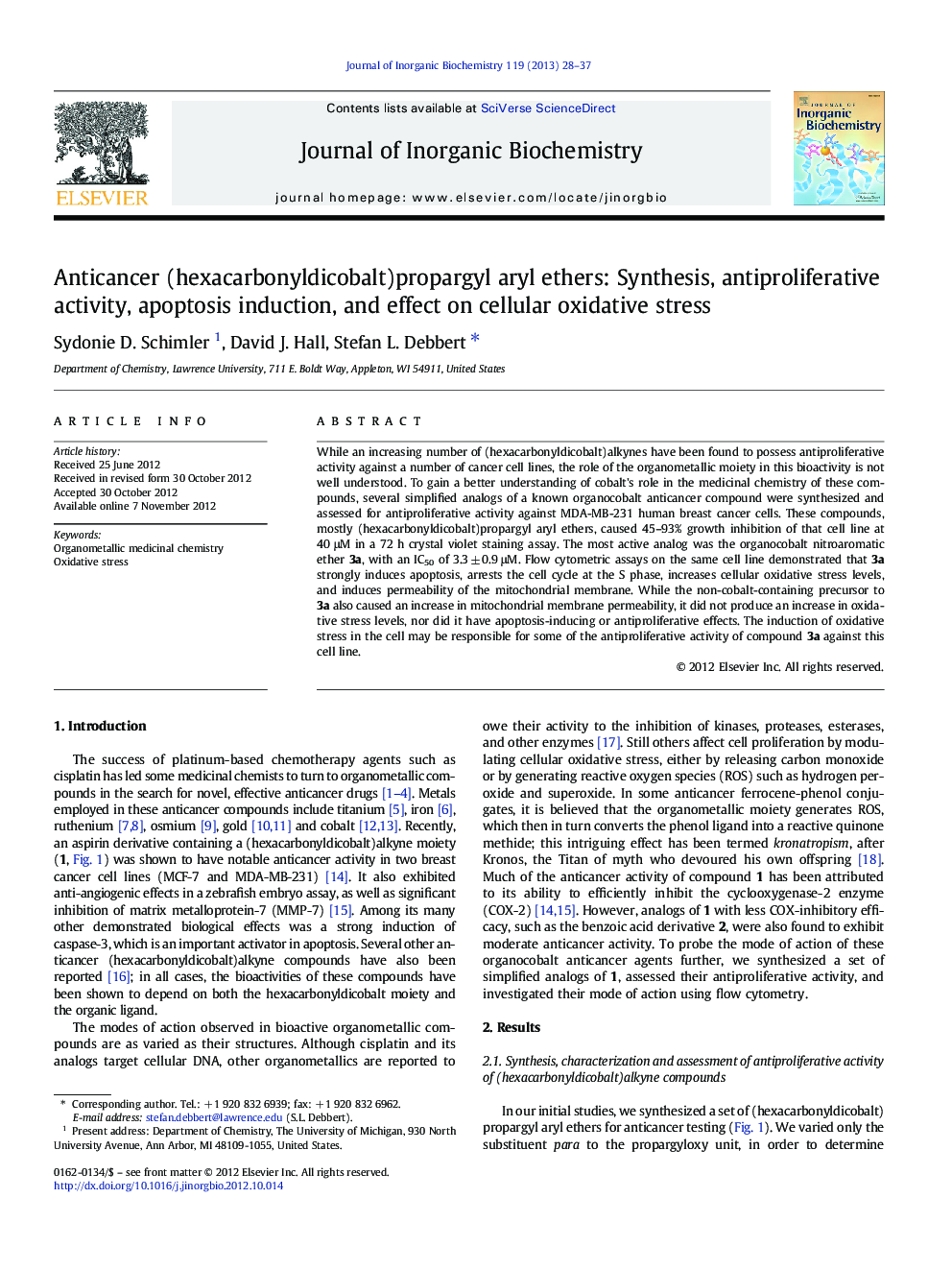| Article ID | Journal | Published Year | Pages | File Type |
|---|---|---|---|---|
| 1317686 | Journal of Inorganic Biochemistry | 2013 | 10 Pages |
While an increasing number of (hexacarbonyldicobalt)alkynes have been found to possess antiproliferative activity against a number of cancer cell lines, the role of the organometallic moiety in this bioactivity is not well understood. To gain a better understanding of cobalt's role in the medicinal chemistry of these compounds, several simplified analogs of a known organocobalt anticancer compound were synthesized and assessed for antiproliferative activity against MDA-MB-231 human breast cancer cells. These compounds, mostly (hexacarbonyldicobalt)propargyl aryl ethers, caused 45–93% growth inhibition of that cell line at 40 μM in a 72 h crystal violet staining assay. The most active analog was the organocobalt nitroaromatic ether 3a, with an IC50 of 3.3 ± 0.9 μM. Flow cytometric assays on the same cell line demonstrated that 3a strongly induces apoptosis, arrests the cell cycle at the S phase, increases cellular oxidative stress levels, and induces permeability of the mitochondrial membrane. While the non-cobalt-containing precursor to 3a also caused an increase in mitochondrial membrane permeability, it did not produce an increase in oxidative stress levels, nor did it have apoptosis-inducing or antiproliferative effects. The induction of oxidative stress in the cell may be responsible for some of the antiproliferative activity of compound 3a against this cell line.
Graphical abstractIn this paper, a series of novel (hexacarbonyldicobalt)alkyne ethers with antiproliferative activity against MDA-MB-231 cells is described. The most cytotoxic of this series, shown here, strongly induces apoptosis, arrests the cell cycle at the S phase, increases cellular oxidative stress levels, and induces permeability of the mitochondrial membrane.Figure optionsDownload full-size imageDownload as PowerPoint slideHighlights► A series of novel anticancer organocobalt compounds is described. ► The most active is a nitroaromatic ether, with an IC50 of 3.3 μM ± 0.9 μM. ► This compound also induces apoptosis and arrests the cell cycle at the S phase. ► This compound also increases cellular oxidative stress levels.
